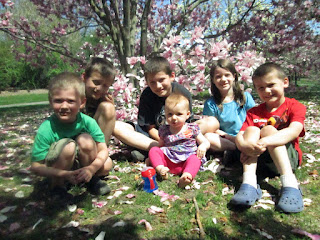We are going to be working through a Creepy Crawly Science book this summer, so I thought it would be nice to share the process in case any readers would like to follow along with your kids!
Let's get ready for our first Science experiments! Roly-Polies! (Chapter 3 if you are following along.)
This week will be our field hunt and observation. You will be on the search for these little Roly-Polies aka Pill Bugs and make a few observations about the bugs.
Your supply list:
- Petri dishes or kitchen saucers with plastic wrap.
- One small potato or apple chunk (1/3") per dish.
- Filter paper or paper towel circles (1 per dish).
- enough sand to fill 1/2 of each dish
- a sheet of dark construction paper for every 2 dishes.
- playdough or something to make crevices or tunnels for exp #4
- fabrics, paper, soil, etc for offering different textures exp #5
- cups to hold roly-polies while altering containers for experiments
The children can find these in your backyard if you'd like. Look under logs, bricks or any dark damp area. If the areas are left back in place, we will be able to find other creatures for future experiments.
Sow Bugs and Roly-Polies are similar, but not the same because sow bugs do not roll up into a ball. They are both crustaceans and either will work fine for the experiments.
Putting together the habitat is a great project for the child to do.
Keeping these little critters is easy. They need a place to burrow, moisture and a little bit of food. Use a container with a lid containing holes. You can use plastic wrap w/ a rubber band if you'd like. The container will need a moist paper towel. (we will add sand during experiments.)
You will also want a small item such as a log or something for the bug to burrow under and through. I might even just pick some rocks and sticks. Toss an apple chunk or potato chunk in there about once a week to keep the habitat acceptable.
Observations:
Allow the children to setting the bugs they have into their containers after set-up.
Ask the children to describe the bugs to you. What do they see?
Help them notice that they are not insects and why. You can tell them at this point they are crustaceans and why.
Ask where the bugs are found outside. Why do we find them there? (damp & dark places w/ moisture.)
Why do they stay in these places? what do they need to stay alive? (Food, water, safe place from predators.)
The first 2 experiments we do next week, will determine the validity of the conversations we just had with the children.
Here are a few links to check out about Roly Polies!
Pictures to come of our experiments!
~Rachel




















